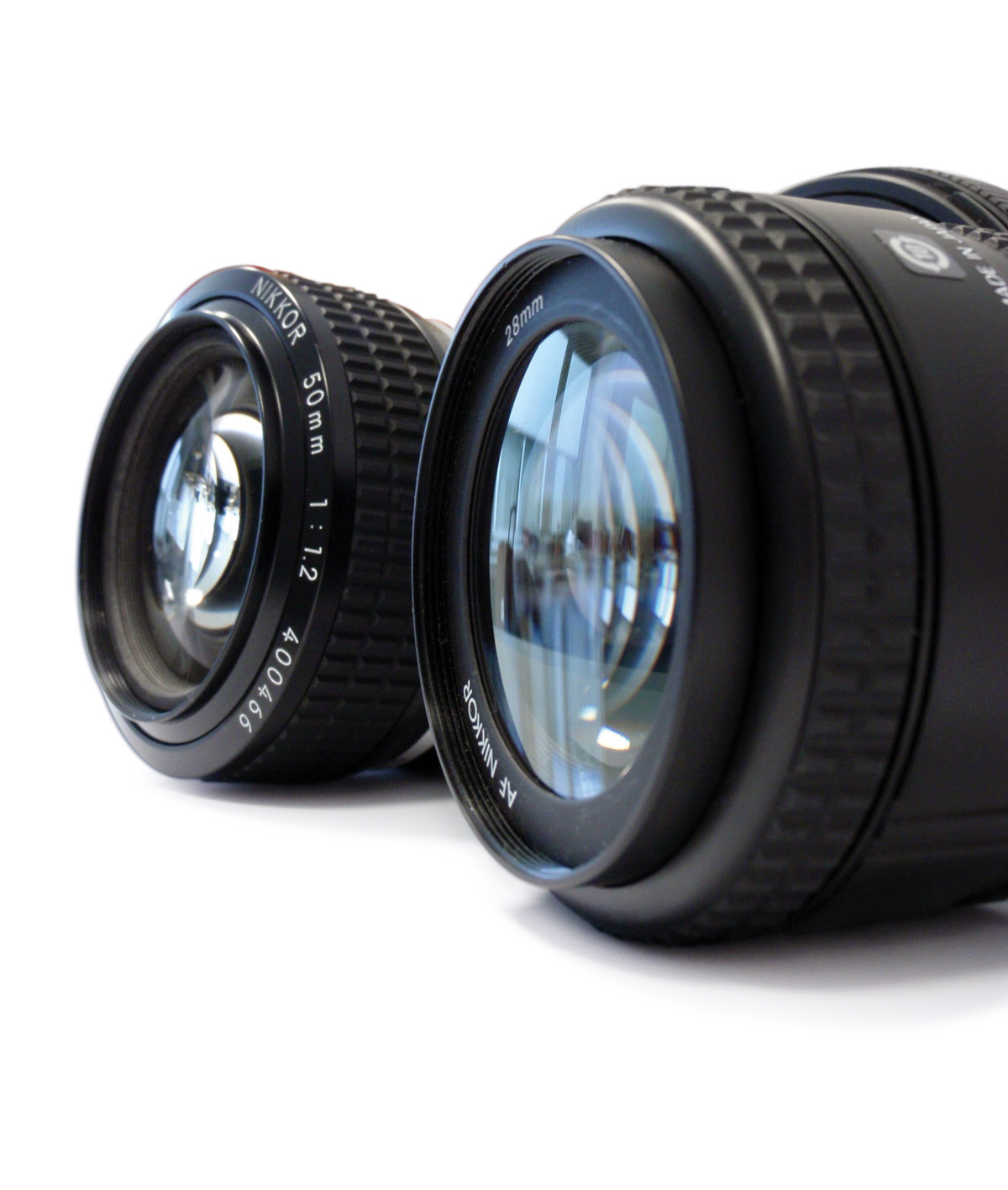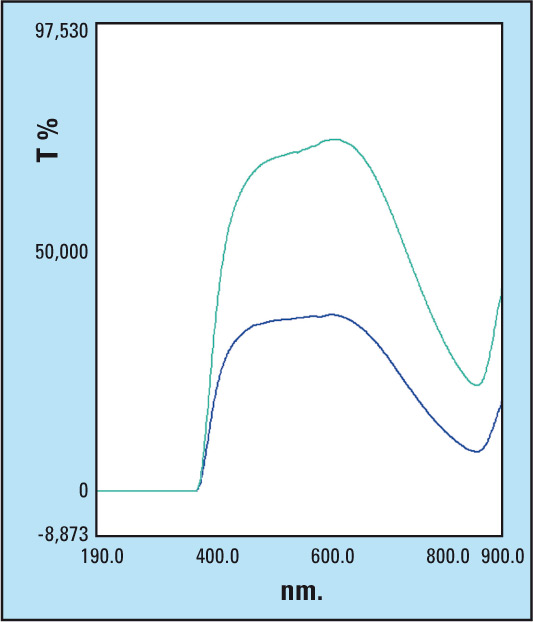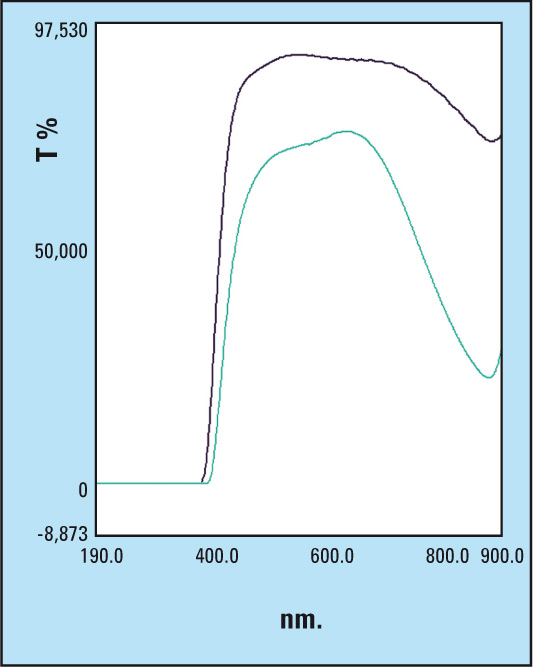Everything within view
Quality control of camera objectives with UV-2600 and MPC-2600
 Figure 1: Two camera objectives from different manufacturers, featuring a standard lens and a macro lens
Figure 1: Two camera objectives from different manufacturers, featuring a standard lens and a macro lens
With the introduction of the new generation of LO-RAY-LIGH® gratings in Shimadzu’s new UV-2600/UV-2700 UV-VIS spectrophotometer series, many application areas in the field of optics can now be covered. In addition to single optical elements such as lenses and glasses, composite materials or single-coated systems and even entire assemblies can now be analyzed. Camera objectives are small optical benches, equipped with different lenses and glasses with protective coatings or surface finishes. The quality of an objective is determined by its light intensity and low optical aberrations.
The light intensity can be determined spectroscopically. By combining the UV-2600 or UV-2700 with a MPC-2600 extra large sample compartment, non-destructive analysis of entire camera objectives is possible. This sample compartment is equipped with a V-shaped holder, ensuring stable positioning of the objective. The holder can be positioned in all three dimensions, so that the analytical irradiation hits the center of the objective optics and passes through the optical bench, while the spectrophotometer measures the incident light intensity, which is displayed in the form of transmittance spectra. These spectra show not only the light throughput in percentages but also the transmission range as a function of wavelength for visible and ultraviolet light.
Quality determination of objectives and camera accessories
Using this combination of instruments, it becomes possible to establish a quality determination process that allows production control of a production series. In addition, it is also possible to check the specifications that characterize the objective. The goal is, after all, to manufacture high-quality objectives. There are several criteria in photography that can be met by implementing such quality control:
- the visible range of an objective for the image quality of the colors, or depth of field in the photographs
- the quality of the coatings on glasses and lenses
- sensitivity in the red or blue ranges.
In addition, a UV-VIS spectrophotometer can be used to qualify camera accessories such as polarizing filters or UV filters.
Testing two objectives
In the experiment shown here, two objectives from different manufacturers were tested. Since the objectives have been designed for different uses, they have different characteristics:
- Fixed lens system, 50 mm F/1.2
- Macro lens, 28 – 300 mm F3.5 – 6.3 DG Macro (F = focal length, 1.2 or 3.5 – 6.3 are aperture values.)
The objectives were measured using the UV-2600 and MCP-2600 sample compartment. The objectives were placed on the V-table of the MPC-2600 and were brought to the measuring position. The measuring assembly simulates the incident light for imaging within the camera. The objectives were measured with the incident light from outward to inward.
The detector (photomultiplier) is located in an integrating sphere (Ulbricht sphere) and displays the transmittance, i.e. the light of the transmittance of the object (objective). Furthermore, absorptions by sealings can be expected, as well as effects of reflections and antireflective coatings.
Discussion of the spectra
When the focal length is increased, the light transmittance decreases due to the reduction of the field of view, as can be seen in Figure 2. The spectra displayed are the light transmittance at 28 mm (70.6 %) and 300 mm (37 %). Due to the reduced light transmittance, taking a photograph using the zoom setting needs a longer exposure time, a larger aperture or additional lighting in order to obtain more light intensity.
 Figure 2: UV-VIS spectra of a zoom objective at a setting of 25 mm (green) and 300 mm (blue)
Figure 2: UV-VIS spectra of a zoom objective at a setting of 25 mm (green) and 300 mm (blue)
The quality of the objectives varies according to the function of the objective. An objective with fixed focal length can result in good light transmittance with few components. Figure 3 shows two very different representative examples.
 Figure 3: UV-VIS spectra and comparison of the light transmittance of a fixed objective (black) of 50 mm with a zoom objective (green) at a setting of 25 mm
Figure 3: UV-VIS spectra and comparison of the light transmittance of a fixed objective (black) of 50 mm with a zoom objective (green) at a setting of 25 mm
The light transmittance of the fixed focal length results in a value of 86.7 % while the variable focal length results in a transmittance of up to 70.6 %. Assuming the loss of 4 % of the original energy at all surfaces based on the physics of flat glass, it might be concluded that the fixed objective consists of four glass components.
With extrapolation, four glass components should result in a loss of approx. 15 % of transmittance. This corresponds approximately to the measured value of 86.7 %. But this is, of course, a rough estimate for an unknown object in which other aspects, e.g. filtering surface coatings, can have an influence.
Both objectives are distinguished by their wavelength range. The objective with fixed focal length features a high light transmittance. In addition, a profile maximum at approx. 520 nm corresponding to the green wavelength range is apparent. In comparison, the zoom objective is optimized for wavelengths in the red range (approximately 620 nm).